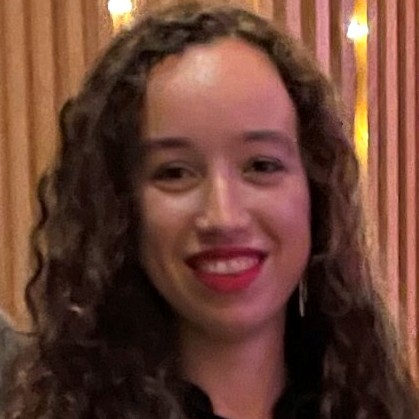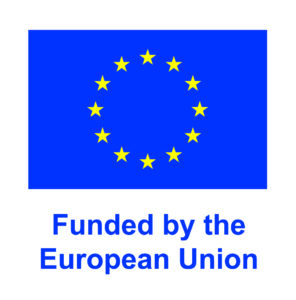“Nothing in science has any value to society if it is not communicated.” With this quote, American clinical psychologist and researcher Anne Roe emphasised the importance of science communication already back in 1952. In the context of ongoing societal challenges and simultaneous rapid scientific and technological advances, science communication is more relevant than ever. Anne Roe’s point remains clear: Scientists need to ensure that the public learns about their research and break down the barriers between science and society.
But let’s start here: What is science communication? Science communication wants to inform, educate and raise awareness of science-related topics among society and a non-expert audience, and communicate complex scientific concepts in a manner that is accessible and engaging. Why is it important? In an era where scientific advancements shape our lives, science communication not only increases public understanding and appreciation of scientific achievements, but also fosters informed decision-making. By breaking down barriers and demystifying research, science communication promotes a society that values and supports evidence-based knowledge, leading to advancements that benefit us all.
In GENEGUT, we want to promote effective science communication to raise awareness about the project and equip the GENEGUT researchers with the necessary skills to inform society about the objectives and benefits of their research. To facilitate this, last week, GENEGUT partner accelopment (accelCH) organised a two-hour transferable skills training session on science communication hosted by Dr. Emily Rose Ciscato and Jamuna Siehler, specifically targeted at the early-career researchers in GENEGUT. Keen to learn more? Here’s the run-down of GENEGUT science communication 101:
Start with the basics!
Effective science communication likes to be well thought out. This means: do not just jump into it, but do invest in strategy. And part of this strategy should also include adapting to different types of audiences, considering their level of expertise in the topic and adjusting our wording accordingly, to make sure the message we want to convey can be easily understood.
Have you ever tried explaining what you do to a professional from a different field? Your kids, or other family members? If so, you likely will have experienced how differently you would word your explanations. In a first training exercise, the GENEGUT researchers tried to identify words in their research objectives that might be challenging to grasp by different target audiences. Are the terms too technical? buzzwordy? Or simply a little too ambiguous? Keep this in mind – we will come back to those later.
“By training early-career researchers in science communication skills, we aim at empowering them to share the impact of their work with diverse audiences, while enhancing their skill set and fostering inclusivity.”
Dr. Emily Rose Ciscato, Project Manager Communications and trainer (accelCH)

Strategies and patient-friendly language
But which science communication activities are we actually implementing in GENEGUT? Well, you are currently reading one. But besides our project website, news articles and social media channels, we have defined a number of strategies that will help us to inform different stakeholder groups about the project. GENEGUT follows a patient-centred approach in the development of a new oral RNA-based therapy for Crohn’s disease. In the project, this patient perspective is represented by EFCCA. Luisa Avedano (EFCCA Chief Executive Officer) and Isabella Haaf (Deputy Director and Head of Communications at EFCCA) were also invited to contribute in the science communication training, bringing in their perspective on what patient-friendly language is and how to master it. “What the patient really wants to know is how the outcome will benefit their day to day lives”. said Bella Haaf when discussing the content and language of a GENEGUT factsheet for patients, “keep it simple, refrain from technical jargon and if you do need to use a scientific term – explain it!”.

“It was a great workshop, and it really taught me important things about science communication that are hard to learn somewhere else”
Ana Francisca Soares, Doctoral Researcher GENEGUT (UCC).
Mastering the social in social media
The last part of the science communication training focused on a key strategy of modern science communication – social media. GENEGUT is currently present on three social media channels, LinkedIn, Twitter and YouTube, and has already built a strong online community of interested stakeholders. But how can social media be used effectively?
Among others, tips for a meaningful presence on social media include regular postings, engaging visuals, measures for accessibility (key word: alt text!). But when it comes to social media, learning by doing reigns supreme (literally – or how else will you learn which types of posts actually hit your set targets?). So the GENEGUT researchers got to work…
Social media campaign: the GENEGUT research objectives – revised.
A few weeks ago, we engaged our online community on Twitter and LinkedIn with a series of interactive polls asking them about their understanding of several technical terms related to GENEGUT. These were not selected arbitrarily. They are key-terms related to the research objectives of some our early-career researchers. With the help of the results of these polls, we were able to identify and analyse the terms that are challenging for our audience, or determine which terms might be easy to understand, but lack context. Full transparency: looking at our social media stats, the majority of our online community are fellow researchers in the fields of pharmaceutics, drug delivery systems and other experts. It can be assumed that the results would look different if posed to a strictly non-expert audience. Given this, our researchers applied their acquired science communication skills, identified challenging terms, revised their individual research objectives applying non-expert friendly language and crafted the tweets for this social media campaign which constitutes a tangible outcome of the training. Interested? Here are the results:


